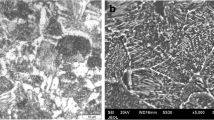Abstract
Water chamber head is an important component of the steam generator in the nuclear power plant AP1000. It is made of 508III, a type of steel with high strength, low hardness, high toughness, and poor machinability. Traditional cutters are not efficient in cutting process, while the layer face milling cutter is able to reduce the cutting force at cutter teeth and, therefore, can prolong the tool life and improve the cutting efficiency thanks to the use of the layered milling technique. In this work, structural parameters of the layer face milling cutter for processing 508III are determined from aspects of the cutter structure, the cutter head diameter, and the cutter tooth density, with regard to characteristics of the heavy-duty cutting process. Next, geometrical parameters of the cutter, including the axial rake angle, the radial rake angle, the cutting edge angle, and the step structure, are optimized by means of single-factor experiment and static analysis. Finally, the performance of the optimized cutter is verified by two-level fuzzy comprehensive evaluation with using the indexes determined in the above experiment. The optimization of the layer face milling cutter can not only raise the cutting efficiency but provide some support, both theoretically and technically, for heavy-duty cutting applications.
Similar content being viewed by others
References
Jing JQ, Luan HW (2008) The development of world nuclear power and China’s nuclear power. Northeast Electric Power Technol 02:48–52
Li CL, Zhang MQ (2008) Overview of reactor pressure vessel steel in PWR nuclear power plants. Materials Review 22(9):65–68
Liew WYH, Ding X (2008) Wear progression of carbide tool in low-speed end milling of stainless steel. Wear 265(1–2):155–166
Liu L, Cheng YN, Wang T, He GH (2017) Adhering failure and optimization of cemented carbide inserts for the heavy-duty cutting of high-strength steel forgings. PI Mech Eng E-J Mec 231(5):930–938
Liu AM, Shen H, Kruth JP (2008) Mechanism of the tool flank wear influenced by the vibration characteristics of the tool holder system in high-speed milling. Chin J Mech Eng 04:63–68
He GH, Liu XL, Yan FG, Hai YSZ, Li M (2011) Research on the application and design of special tools of the hydrogenated cylindrical shell. Adv Mater Res 188:450–453
Chen YN, Han Y, Lu ZZ, Liu L, LIU YZ (2015) The optimization design and analysis of efficient layer cutting milling cutter for water chamber head machining. J Harbin Univ Sci Tech 20(3):1–7
Ji SY, Liu XL, Yan FG (2010) Layer face milling cutter parametric modeling and modal analysis. Adv Mater Res 102-104:605–609
Shi Y, Zheng G (2016) The algorithm of layering calculation for corner plunge milling tool path. Int J Adv Manuf Technol 91(5):1–17
Liu Q, Liu WZ (2016) Stability research on step milling of GH4169G blisk. J Aerosp Power 31(5):1025–1031
Mei Y, Mo R, Sun H (2017) Chatter detection in milling based on singular spectrum analysis. Int J Adv Manuf Technol 1:1–12
Tang AM, Zhou ZX, Z T (2011) Dynamic balance and design of high-speed end milling cutter with three unequal blade spaces. Chin J Mech Eng 47(13):180–185
Chen ZY, Zhao HL, LIU KX, Song JG (1982) A new type of step end milling cutter. Machinery Manufacturing 12:6–7
Mei ZS (2009) General knowledge and usage method of cemented carbide tool
Cheng YN, Liu L, Lu ZZ (2015) Study on the adhering failure mechanism of cemented carbide inserts and element diffusion model during the heavy-duty cutting of water chamber head. Int J Adv Manuf Technol 80(9–12):1833–1842
Cheng YN, Gong YN, Han Y, Liu L, Liu LJ (2015) Vibration modal analysis of the cutter and main shaft system in heavy milling process of water chamber head. J Vibration Shock 34(18):39–44
Long ZH, Wang XB, Liu ZB (2005) Research on wear modes and mechanism of carbide tools in high-speed milling of difficult-to-cut materials. Tribol 25(01):83–87
Ponticelli GS, Guarino S, Giannini O (2017) A fuzzy logic-based model in laser-assisted bending springback control. Int J Adv Manuf Technol 95(04):1–12
Hu YH, He SH (2010) Comprehensive evaluation method
Funding
This project was financially supported by the National Natural Science Foundation of China (No. 51675145) and the research and development project of applied technology of Harbin (2014DB4AG017).
Author information
Authors and Affiliations
Corresponding author
Rights and permissions
About this article
Cite this article
Cheng, Y., Jia, W., Nie, W. et al. Optimum design and performance evaluation of layer face milling cutter for cutting 508III steel. Int J Adv Manuf Technol 98, 729–740 (2018). https://doi.org/10.1007/s00170-018-2272-7
Received:
Accepted:
Published:
Issue Date:
DOI: https://doi.org/10.1007/s00170-018-2272-7




